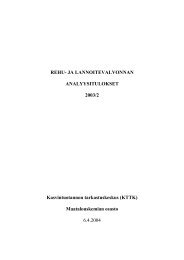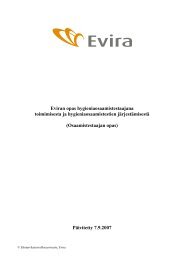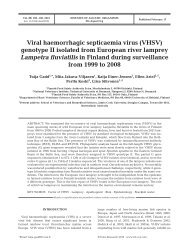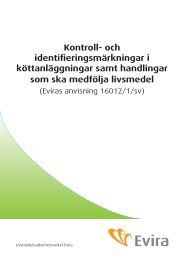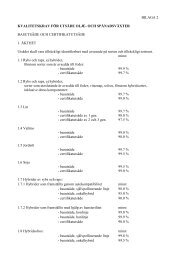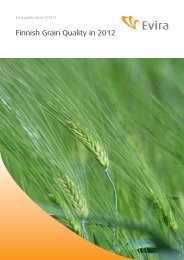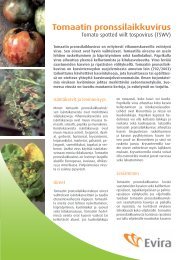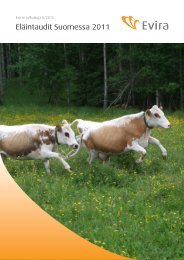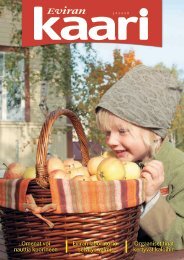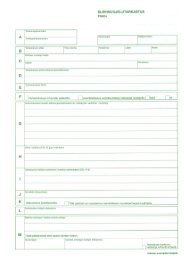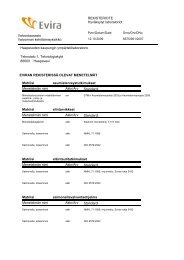Download PDF, 1522 kB - Evira
Download PDF, 1522 kB - Evira
Download PDF, 1522 kB - Evira
Create successful ePaper yourself
Turn your PDF publications into a flip-book with our unique Google optimized e-Paper software.
the latter two was concentrated in the first years of the survey period (Appendix<br />
7). However, S. Havana was found in all the years of the period.<br />
For feedstuffs of vegetable as well as animal origin, the proportion of Salmonellacontaminated<br />
feed as a percentage of the total volumes of domestic feed produce<br />
has remained below 0.1 % and for feed mixtures considerably lower than this<br />
(Appendix 8). In Appendices 9 and 10, the same matter is reviewed for imported<br />
feeds, albeit so that the relative percentage of Salmonella-contaminated feed has<br />
been calculated on imported amounts targeted by control inspections.<br />
4.4 Deliberation<br />
Strict control of imported feedstuffs, i.e., of raw materials imported from third<br />
as well as EU countries for use in feedstuffs, has been found the most efficient<br />
means to restrict the spread of Salmonella to factories and farms. Official control<br />
by national legislation can be targeted on each batch of the raw materials<br />
of vegetable origin that carry Salmonella risks. Liabilities included in legislation<br />
concerning compensation for damages as a consequece of Salmonella in feeds<br />
have, for their part, promoted the desire of importers and feed manufacturers to<br />
develop their activities. The feed industry has also developed self-control systems<br />
to eliminate Salmonella hazards from feed chains. Later in the 90s, a requirement<br />
for self-control systems was added to the national legislation. It has become a<br />
rare incident to find Salmonella in feed-factory processes.<br />
The latest Salmonella epidemic involving feedstuffs for animals in food production<br />
occurred in 1995, when over one hundred farms were contaminated by<br />
feed mixtures containing Salmonella from one feed factory, but after successful<br />
decontamination procedures the farms were disinfected from Salmonella.<br />
The self-control systems established by factories, and their self-control laboratories,<br />
found about half of all the Salmonella-contaminated control samples, which<br />
were regularly taken either by the authorities or through voluntary self-control.<br />
The number of self-control systems among manufacturers of production-animal<br />
feed increased in 1995 to cover almost all manufacturers, and these systems<br />
were further developed in 1996 to 1999.<br />
Most Salmonella found in 1995 to 2004 were from raw materials, from which<br />
they can be eliminated by heating prior to use in feed mixtures and pet-animal<br />
products for the market. Therefore, these have not been found to cause Salmonella<br />
problems in the food chain.<br />
Salmonella control and occurence of Salmonella from 1995 to 2004



